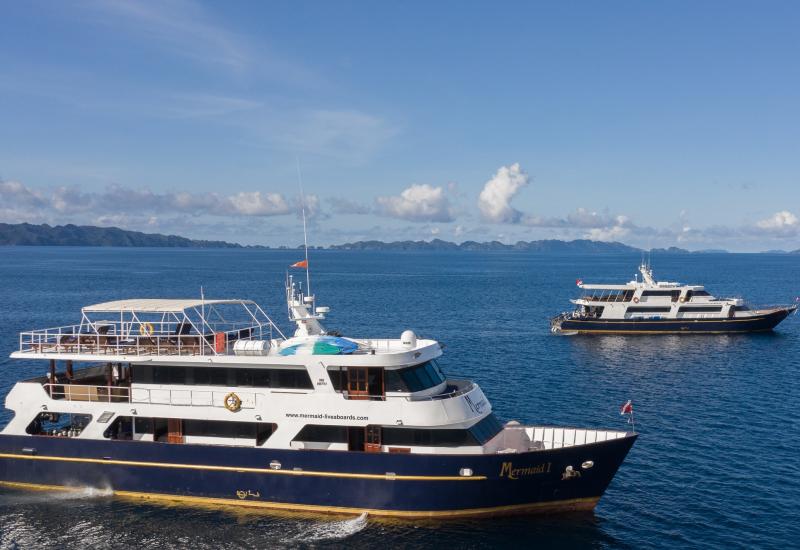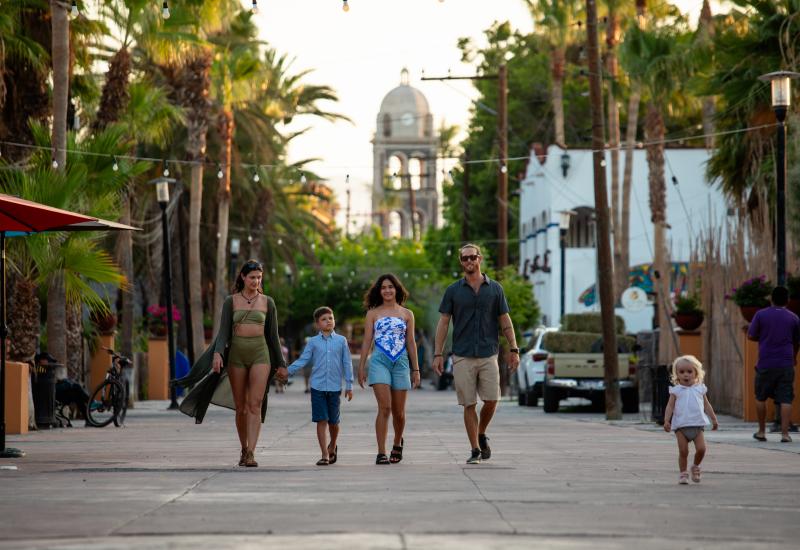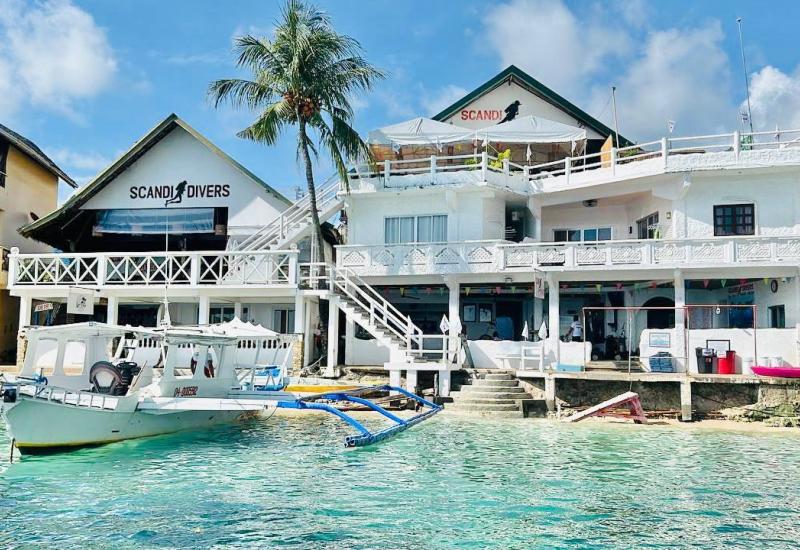Marquesas Islands
 |
October 2001
Text and Photography by Abigail Smigel
Because they are farther from a continental landfall than any other group of islands on earth, getting to the Marquesas Islands presents a challenge filled with helicopters, four-wheel-drive vehicles and predawn flights. But as travel writer Paul Theroux wrote, "The most beautiful places lie at the end of the worst roads."
Little has changed since the likes of Robert Louis Stevenson and Herman Melville roamed these wild islands, and the spirit of the classic 19th-century South Seas adventure is still evoked here by volcanic spires, brooding pinnacles and a scarcity of safe harbors. With the noa noa, or fragrance of the tiare flower, filling the air, it is easy to understand why Paul Gauguin chose these islands as the final resting grounds in his search for paradise.
The Diving
Low visibility from nutrient-rich water is frustrating to most divers, but rushing currents in the Marquesas carry plankton that feed larger animals, including manta rays that measure as much as 16 feet across. The shadow of one of these great animals is cast on almost every dive, and a day without a manta is--like a day without breathtaking vistas in the Marquesas--rare. But there are areas where manta rays are not the stars. Places where dragon eels poke their heads from rocky cracks and boxer crabs jab anemone-covered pincers like Muhammad Ali. There are also seamounts, created by the violent volcanic eruptions that formed these islands millions of years ago. The seamounts in these strong currents attract thousands of schooling fish as well as whitetip, blacktip, silvertip and gray reef sharks and the occasional scalloped hammerhead.
Geography and Culture
The 12 islands that make up the Marquesas cover an area of approximately 807 square miles, roughly 500 miles south of the equator.
Because they are a part of French Polynesia, the islands have a strong French influence. Of the 7,000 inhabitants, most speak French as well as Marquesan, a variation of the Tahitian dialect. The two main islands are Nuku Hiva, where the main airport is located, and Hiva Oa, where Paul Gauguin and Jacques Brel are buried in the Calvary cemetery. The smell of fresh-baked baguettes pervades the morning air of Taiohae, at the southern end of Nuku Hiva, and the open market on Saturday and Wednesday mornings is reminiscent of a fishing village in southern France.
As strong as the French influence is, Marquesans have a culture entirely their own. The form of stone tikis from generations past has made its way into modern wood carvings that are sold to passing travelers. Mandolin-playing singers are a part of daily street life.
 |
Getting There
Traveling to the Marquesas is no easy task, as there are no direct flights from the continental United States. You must pass through Papeete, Tahiti, which is served by international airlines. However, flights are not daily and often arrive in the wee hours of the morning.
If you travel aboard the legendary ocean freighter Aranui, your trip begins in Papeete, and the 750 miles to the Marquesas are covered by boat, stopping at six islands in the group. If you choose to stay in Taiohae at the southern end of Nuku Hiva where the dive shop is, you should book a three-and-one-half-hour flight aboard Air Tahiti from Papeete to the airport at the north end of the island. Once in the northern portion of Nuku Hiva, the final 50 miles to Taiohae can be covered either by an expensive, but breathtaking 10-minute helicopter ride or by a two-hour four-wheel taxi ride that will take you up and over the foreboding hills. Four-wheel-drive vehicles are just about the only form of transportation to surmount the unforgiving landscape.
Occasionally, live-aboards offer trips to the Marquesas, and these are ideal as they offer constant diver support and flexibility to dive in locations throughout the islands. A chartered dive boat is another option.
Dive Sites
||
|---|
|

|
The Hammerhead SentinelDepth: 60 feet and deeperSkill Level: Intermediate
This site, named for the scalloped hammerheads often spotted here, is two dives in one. The macro life, featuring dragon eels, boxer crabs and cleaner shrimp, will occupy your time until the hammerheads show up, which they often do.
Melonheaded Whales
Depth: Surface to 60 feet
Skill Level: Novice
There is one prerequisite to this dive or snorkel: calm seas. The calmest location for viewing melonheaded whales is the eastern portion of the island of Nuku Hiva. The playful, white-lipped animals leap in the surf and can be enticed to swim near snorkelers by the engine of a zodiac. Centre Plongee in Taiohae offers tours focusing on these animals.
Matateiko Point
Depth: 60 to 100 feet
Skill Level: Intermediate
This rocky outcropping is on the western portion of Nuku Hiva. The steeply sloping undersea wall harbors an abundance of masked morays, dragon eels and more. Manta rays are especially abundant here, and the occasional shark can be spotted cruising the reef.
Fatu Hiva Island
Depth: 30 to 100 feet
Skill Level: Novice
The landscape of Fatu Hiva is like none you will ever encounter anywhere else. The towering spires that encircle Hanavava Bay drop swiftly into the water. The rocky reef is abundant with adhesive anemones, three-spot damsels, cowries and eels.
Ua Huka Island
Depth: 30 to 100 feet
Skill Level: Intermediate
The underwater scene here begins with rocky substrate and transforms into sand in deeper water. Mantas are frequent visitors. On the sandy bottom, shrimp gobies guard the holes where their blind shrimp companions persistently clean house.
 |
Travel Tips
Climate: Subtropical. Temperatures typically range between 68F and 72F throughout the year. The driest time is the summer months from July through September.
Average water temperature: 74F to 80F. A 3mm wetsuit is adequate for most, though some divers may want a hooded vest for added warmth when repetitive dives are made.
Visibility: Anywhere from 40 to 100 feet.
Currency: French francs, though most merchants will accept American dollars.
Time: Four-and-one-half hours behind Eastern Standard time. The Marquesas do not observe daylight savings time.
Language: Though the official language is French and people in the islands speak English, Tahitian and Marquesan are much more prevalent.
Health: The water is safe for drinking, but you might be better off drinking the bottled water that is imported to the islands from Tahiti and France.
Documents: Passports are necessary and will take you through customs when you arrive in Tahiti.
Tourism Office: (011) 689-50-57-00.
For More Information
||
|---|
|

|
Dive Operators:
Centre Plongee
Taiohae - Nuku Hiva, Marquesas Islands - TEL: (011) 689-92-0088 FAX: (011) 689-92-0597
Gie Plongee
Faa'a, Tahiti - TEL: (011) 689-53-34-96 FAX: (011) 689-43-10-65
Getting There By Boat:
Aranui
Papeete, Tahiti - TEL: (800) 972-7260 or (650) 574-2575

October 2001
Text and Photography by Abigail Smigel
Because they are farther from a continental landfall than any other group of islands on earth, getting to the Marquesas Islands presents a challenge filled with helicopters, four-wheel-drive vehicles and predawn flights. But as travel writer Paul Theroux wrote, "The most beautiful places lie at the end of the worst roads."
Little has changed since the likes of Robert Louis Stevenson and Herman Melville roamed these wild islands, and the spirit of the classic 19th-century South Seas adventure is still evoked here by volcanic spires, brooding pinnacles and a scarcity of safe harbors. With the noa noa, or fragrance of the tiare flower, filling the air, it is easy to understand why Paul Gauguin chose these islands as the final resting grounds in his search for paradise.
The Diving
Low visibility from nutrient-rich water is frustrating to most divers, but rushing currents in the Marquesas carry plankton that feed larger animals, including manta rays that measure as much as 16 feet across. The shadow of one of these great animals is cast on almost every dive, and a day without a manta is--like a day without breathtaking vistas in the Marquesas--rare. But there are areas where manta rays are not the stars. Places where dragon eels poke their heads from rocky cracks and boxer crabs jab anemone-covered pincers like Muhammad Ali. There are also seamounts, created by the violent volcanic eruptions that formed these islands millions of years ago. The seamounts in these strong currents attract thousands of schooling fish as well as whitetip, blacktip, silvertip and gray reef sharks and the occasional scalloped hammerhead.
Geography and Culture
The 12 islands that make up the Marquesas cover an area of approximately 807 square miles, roughly 500 miles south of the equator.
Because they are a part of French Polynesia, the islands have a strong French influence. Of the 7,000 inhabitants, most speak French as well as Marquesan, a variation of the Tahitian dialect. The two main islands are Nuku Hiva, where the main airport is located, and Hiva Oa, where Paul Gauguin and Jacques Brel are buried in the Calvary cemetery. The smell of fresh-baked baguettes pervades the morning air of Taiohae, at the southern end of Nuku Hiva, and the open market on Saturday and Wednesday mornings is reminiscent of a fishing village in southern France.
As strong as the French influence is, Marquesans have a culture entirely their own. The form of stone tikis from generations past has made its way into modern wood carvings that are sold to passing travelers. Mandolin-playing singers are a part of daily street life.

Getting There
Traveling to the Marquesas is no easy task, as there are no direct flights from the continental United States. You must pass through Papeete, Tahiti, which is served by international airlines. However, flights are not daily and often arrive in the wee hours of the morning.
If you travel aboard the legendary ocean freighter Aranui, your trip begins in Papeete, and the 750 miles to the Marquesas are covered by boat, stopping at six islands in the group. If you choose to stay in Taiohae at the southern end of Nuku Hiva where the dive shop is, you should book a three-and-one-half-hour flight aboard Air Tahiti from Papeete to the airport at the north end of the island. Once in the northern portion of Nuku Hiva, the final 50 miles to Taiohae can be covered either by an expensive, but breathtaking 10-minute helicopter ride or by a two-hour four-wheel taxi ride that will take you up and over the foreboding hills. Four-wheel-drive vehicles are just about the only form of transportation to surmount the unforgiving landscape.
Occasionally, live-aboards offer trips to the Marquesas, and these are ideal as they offer constant diver support and flexibility to dive in locations throughout the islands. A chartered dive boat is another option.
Dive Sites

The Hammerhead Sentinel
Depth: 60 feet and deeper
Skill Level: Intermediate
This site, named for the scalloped hammerheads often spotted here, is two dives in one. The macro life, featuring dragon eels, boxer crabs and cleaner shrimp, will occupy your time until the hammerheads show up, which they often do.
Melonheaded Whales
Depth: Surface to 60 feet
Skill Level: Novice
There is one prerequisite to this dive or snorkel: calm seas. The calmest location for viewing melonheaded whales is the eastern portion of the island of Nuku Hiva. The playful, white-lipped animals leap in the surf and can be enticed to swim near snorkelers by the engine of a zodiac. Centre Plongee in Taiohae offers tours focusing on these animals.
Matateiko Point
Depth: 60 to 100 feet
Skill Level: Intermediate
This rocky outcropping is on the western portion of Nuku Hiva. The steeply sloping undersea wall harbors an abundance of masked morays, dragon eels and more. Manta rays are especially abundant here, and the occasional shark can be spotted cruising the reef.
Fatu Hiva Island
Depth: 30 to 100 feet
Skill Level: Novice
The landscape of Fatu Hiva is like none you will ever encounter anywhere else. The towering spires that encircle Hanavava Bay drop swiftly into the water. The rocky reef is abundant with adhesive anemones, three-spot damsels, cowries and eels.
Ua Huka Island
Depth: 30 to 100 feet
Skill Level: Intermediate
The underwater scene here begins with rocky substrate and transforms into sand in deeper water. Mantas are frequent visitors. On the sandy bottom, shrimp gobies guard the holes where their blind shrimp companions persistently clean house.

Travel Tips
Climate: Subtropical. Temperatures typically range between 68F and 72F throughout the year. The driest time is the summer months from July through September.
Average water temperature: 74F to 80F. A 3mm wetsuit is adequate for most, though some divers may want a hooded vest for added warmth when repetitive dives are made.
Visibility: Anywhere from 40 to 100 feet.
Currency: French francs, though most merchants will accept American dollars.
Time: Four-and-one-half hours behind Eastern Standard time. The Marquesas do not observe daylight savings time.
Language: Though the official language is French and people in the islands speak English, Tahitian and Marquesan are much more prevalent.
Health: The water is safe for drinking, but you might be better off drinking the bottled water that is imported to the islands from Tahiti and France.
Documents: Passports are necessary and will take you through customs when you arrive in Tahiti.
Tourism Office: (011) 689-50-57-00.
For More Information

Dive Operators:
Centre Plongee
Taiohae - Nuku Hiva, Marquesas Islands - TEL: (011) 689-92-0088 FAX: (011) 689-92-0597
Gie Plongee
Faa'a, Tahiti - TEL: (011) 689-53-34-96 FAX: (011) 689-43-10-65
Getting There By Boat:
Aranui
Papeete, Tahiti - TEL: (800) 972-7260 or (650) 574-2575










